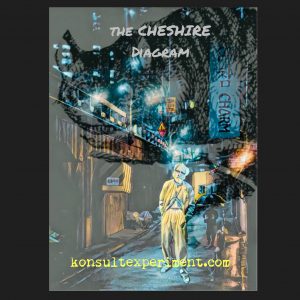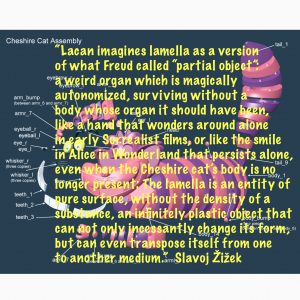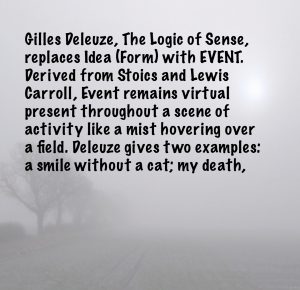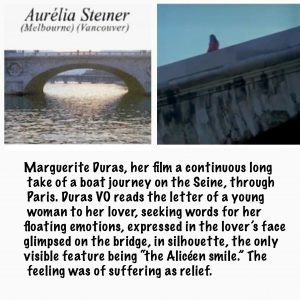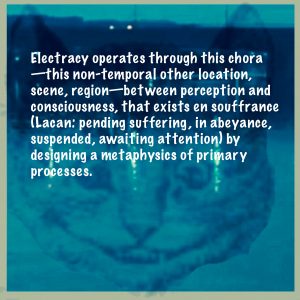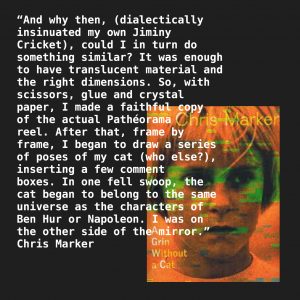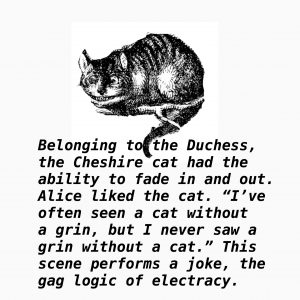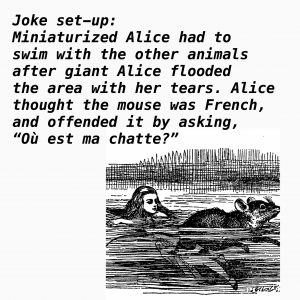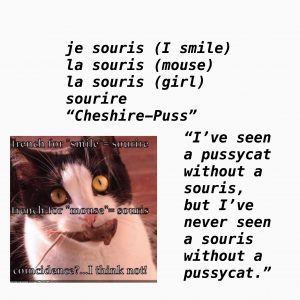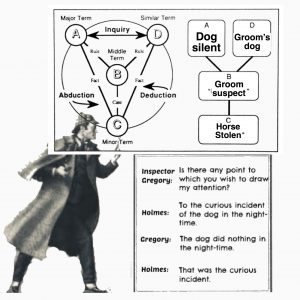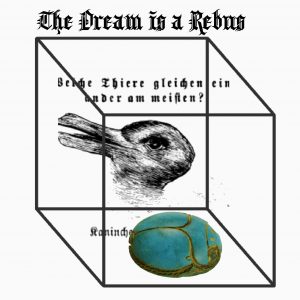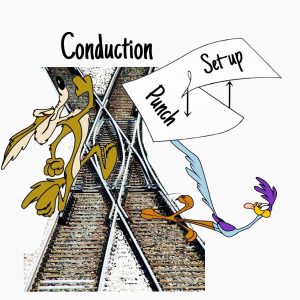Konsulting the Border
Konsult Experiment, beginning December, 2019, Gregory Ulmer and John Craig Freeman (Florida Research Ensemble).
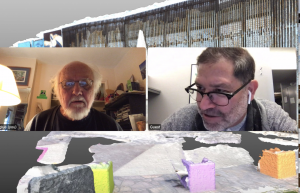
Ulmer and Freeman, Distance Table Work, Konsulting the Border.
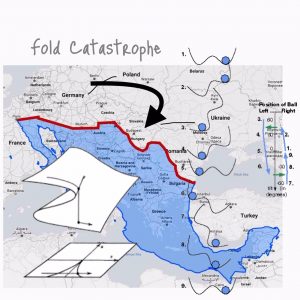
A border is a line: the Big Bend diagrams a fold catastrophe (R. Thom).
Extimacy. This is Lacan’s term to identify the nature of subject identity formation in electracy. Human identity emerges within a field condition (the Unconscious), a psychoanalytic version of Heidegger’s Dasein (being in the world), in which the inside and outside of person are diagrammed using topological figures such as Klein bottle or moebius strip. The import is that “truth” is hidden in plain sight: repression does not erase the subject’s truth but displaces, disguises, distorts it using the tropology of dreamwork, such that it may be recovered, known, reconfigured in therapy (or through practices of art or politics). The theory and practice of psychoanalysis, existential philosophy, and modernist poetics are isomorphic, functioning by means of extimate epiphanies or illuminations: the invisible spiritual affective order “inside” becomes intelligible and accessible through formal operation with and through the material concrete manifest “outside.” In short, the Border outside (US-Mexico border)—configured within konsult theopraxesis—gives insight and knowledge of “the border in me,” and bordering itself as such. Extimacy is how egents gain access to both poles of alienation—totality of global commodity forces and unconscious libidinal drives of the body (corporation and corporeality).
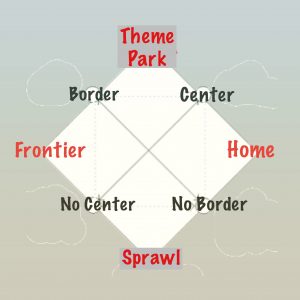
A semiotic square (Greimas) of outlines a border system, indicating a shift from Frontier to Sprawl.
In short, event create extimacy, and extimacy is the ontology required to complete the cognitive map (choragraphy) of electracy, reconnecting the microcosm and macrocosm registers of digital apparatus. The challenge of our project is to design and test konsut, and apply it to choragraphy of the US-Mexico border. The ambition is that the extimate experience of our konsult event educates an engaged public sphere with respect to electracy in general and remediation of border disasters in particular.
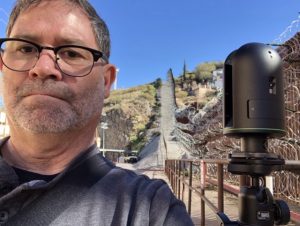
Border Moment, Nogales AZ

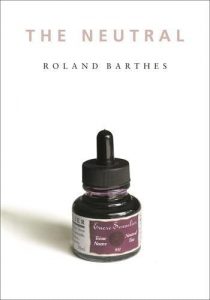 The Cheshire Diagrams are conductive, initiating a certain trajectory, a direction/sense (sens) of inference through information: smile as design prompt, the grin without a (Cheshire) cat, to a suspension of position, being en sourffance (pending), to hovering relative to event. Such is the egent’s orientation to disaster: not to take a stand, formulate a thesis (position), as would be expected in our Contrast, a literate inquiry. Konsult necessarily orients otherwise. The hovering smile leads us to one of the most extensive theoretical explorations of this a-thetic orientation, exemplified in the entire career of Roland Barthes, from the Zero Degree of Writing, to The Neutral (and the final seminar, Preparation of the Novel). In his penultimate seminar taught at the Collège de France, Roland Barthes defined the “neutral” as that which baffles the paradigm. We will have more to say and do (to theopraxese) with the neutral. For now, by way of conductive transition, there is this citation of the seminar’s concluding statement.
The Cheshire Diagrams are conductive, initiating a certain trajectory, a direction/sense (sens) of inference through information: smile as design prompt, the grin without a (Cheshire) cat, to a suspension of position, being en sourffance (pending), to hovering relative to event. Such is the egent’s orientation to disaster: not to take a stand, formulate a thesis (position), as would be expected in our Contrast, a literate inquiry. Konsult necessarily orients otherwise. The hovering smile leads us to one of the most extensive theoretical explorations of this a-thetic orientation, exemplified in the entire career of Roland Barthes, from the Zero Degree of Writing, to The Neutral (and the final seminar, Preparation of the Novel). In his penultimate seminar taught at the Collège de France, Roland Barthes defined the “neutral” as that which baffles the paradigm. We will have more to say and do (to theopraxese) with the neutral. For now, by way of conductive transition, there is this citation of the seminar’s concluding statement.
